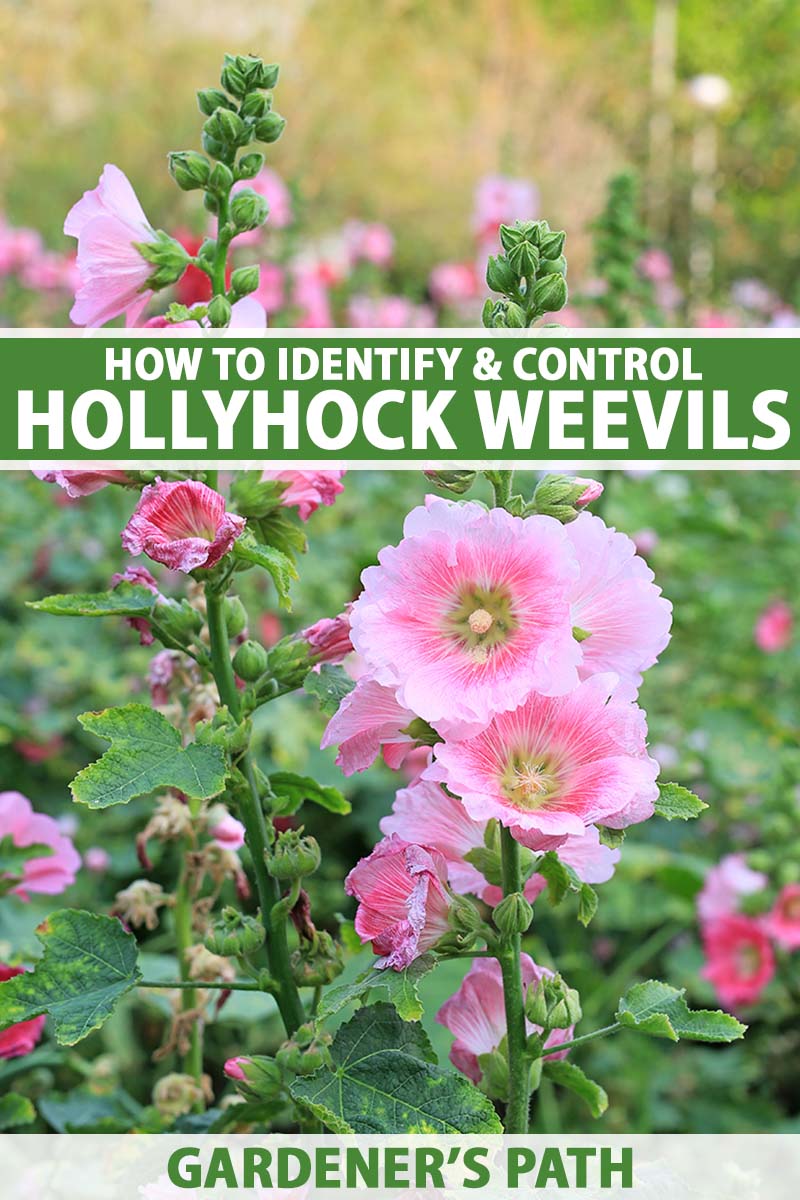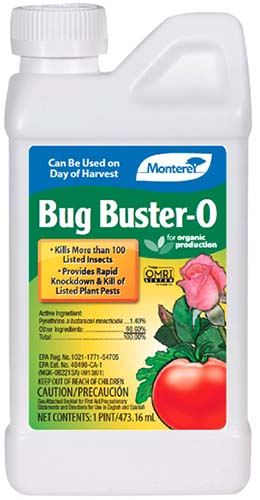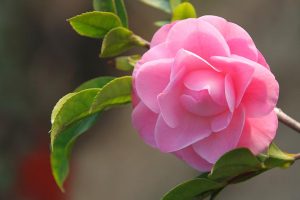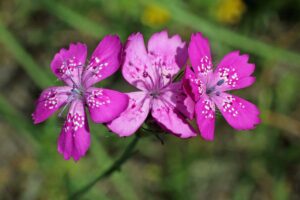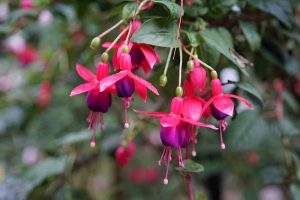Rhopalapion longirostre
My grandma loved hollyhocks, they were her idea of the quintessential cottage garden species and she would make dolls out of the flowers when she was a kid.
But she stopped growing them because, as she said, they always looked ragged.
They looked that way because they were devoured by hollyhock weevils (Rhopalapion longirostre, formerly Apion longirostre) every single year.

We link to vendors to help you find relevant products. If you buy from one of our links, we may earn a commission.
When I bought my first house, I wanted to remind grandma of her childhood, so I decided to hollyhocks.
The first year, mine too looked absolutely ragged. I examined the plants closely and noticed little grayish-black bugs with super long noses crawling all over. And I mean all over, my plants were positively teeming with them.
That’s when I started my mission to do battle with hollyhock weevils. If I can beat them, you can. In this guide, I’ll explain how by going over the following:
What You’ll Learn
What Are Hollyhock Weevils?
Hollyhock weevils are small beetles originally from Europe that eat the foliage of hollyhock plants starting in the summer and then lay their eggs in the flowers.

Not only do they damage the foliage and leave the flowers looking ragged, but they also eat the seeds – a major problem if you are relying on these short-lived perennials to self-seed for the next year.
These pests don’t attack any other species, only hollyhocks, so you don’t need to worry about them damaging your other plants.
They can be found throughout North America, Mexico, Europe, and the UK.
Identification
If you have quarter- or eighth-inch-long beetles crawling all over your hollyhocks, you’re probably looking at a bunch of hollyhock weevils. They’re extremely common.
Look closer, and you’ll see tannish or orange legs and a long snout. The females tend to be larger than the males, and their snouts, technically known as proboscis, can be equal in length to their bodies.
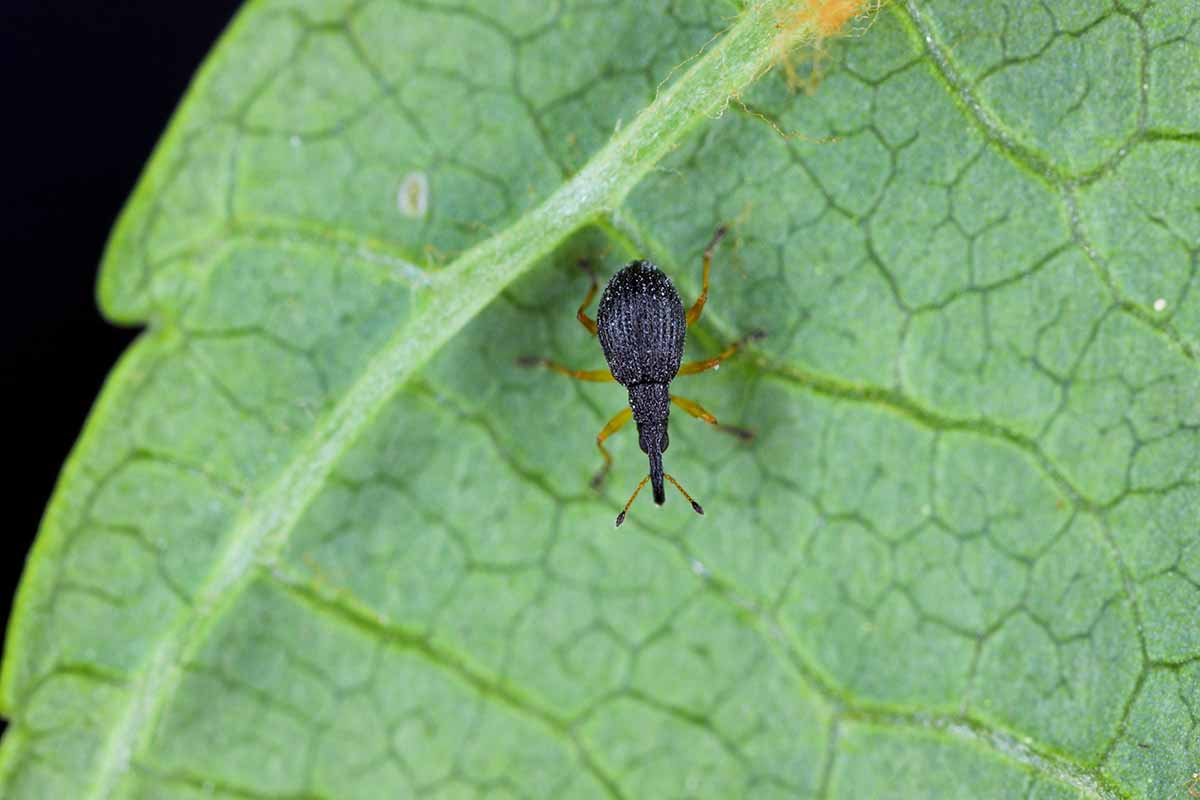
If you don’t see the beetles themselves, look for shot holes throughout the leaves.
It looks similar to flea beetle damage, but flea beetles don’t trouble hollyhocks. So if you see lots of tiny holes, you’re probably going to find lots of beetles nearby.
The leaves can be so full of holes that they look like lace.
Biology and Life Cycle
The adults emerge at the start of summer, a few weeks before the buds start to develop on your hollyhocks. Once the buds develop, the weevils will flock to those and feed.
If you want to teach the kiddos about the birds and the bees, this is a great insect to start with. At any given time, you can usually find a couple of these weevils mid-coitus.
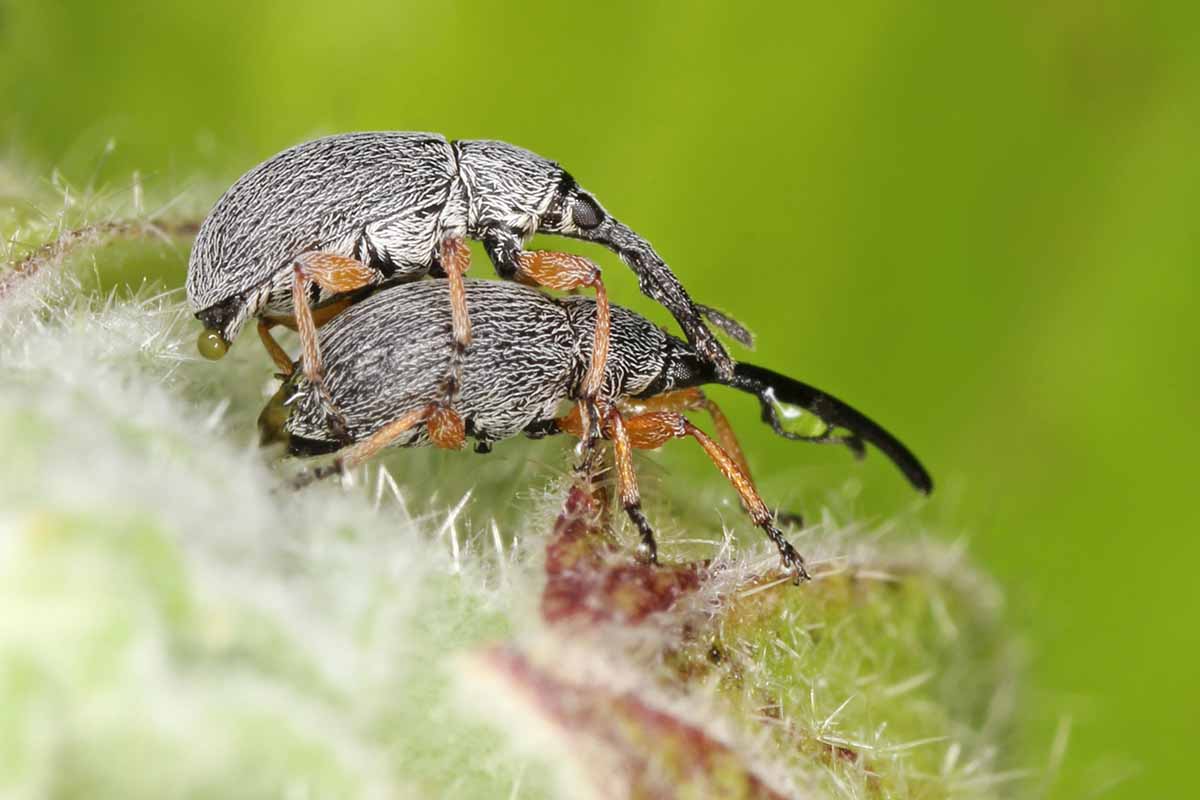
After mating, the smaller males will often stick around to guard the female from other males.
When the flowers start to fade, the females will chew deep into the seed pods and lay their eggs. Sometimes, you’ll find them snuggled inside the sepals, as well. A few days later, the eggs hatch and the grubs emerge. These are white with brown heads.
These grubs feed inside the space between the sepals and seed pods, and inside the seed pods.
They then pupate, and a new generation of adults emerges.
The adults feed on any remaining seeds and leaves before moving into the ground or under leaf debris nearby to overwinter. A few late developing grubs might hide out in the remaining seed pods and pupate the following spring.
As the weather warms up and new plants start to develop in the spring, the adults emerge from the ground and start feeding on the young plants. They’ll eat young shoots, foliage, and emerging buds.
Organic Control Methods
I like being able to bring people good news when we’re talking about pests, and it rarely happens. But there’s definitely good news when it comes to dealing with hollyhock weevils.
They’re pretty easy to control. Insecticides work well, but you can also just knock them off the plant. Let’s talk about how to do that, first.
Physical
Handpicking is highly effective and takes nothing more than a bit of your time.
This is the method I use, and people have commented on how good my hollyhock flowers look, devoid of all those holey, ragged leaves and petals that plague many specimens.
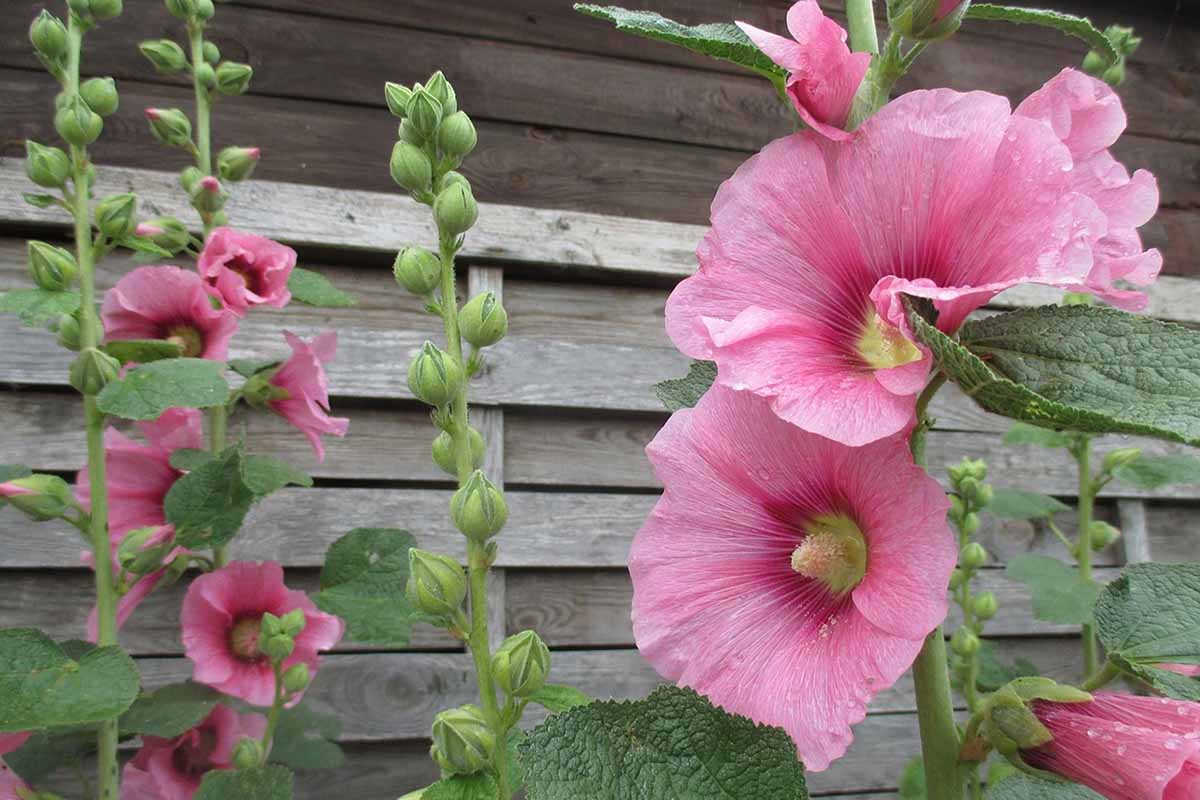
My process is to take a bucket or wide bowl filled with soapy water outside and knock the weevils off the plant so they land in it. I’ll tilt the buds over the bucket and tap them and stretch the leaves, giving them a shake.
You can’t do this just once and call it a day, you have to keep doing it regularly.
I will handpick the weevils every day for a week when I first notice them, and then on a weekly basis until August.
The first year was the worst and it took me a few minutes to remove all the weevils from each plant, but with consistency the populations end up getting smaller and smaller. These days, I can do a row of a dozen hollyhocks in five minutes or so.
Five minutes a week for hole-free plants? It takes that long to spray a pesticide!
Allegedly, the weevils only feed at night, but that’s not my experience – I find them munching away in the middle more often than not. Still, if you want to be sure you’re getting them, go hunting in the evening.
If you don’t want to carry a bucket or bowl, no problem. It’s exhausting if you’re out there for a while.
You can also just hold a piece of paper or cardboard underneath the part of the plant you’re shaking and dump the weevils into soapy water from the paper or cardboard.
Biological
Birds and spiders love many kinds of insects, including hollyhock weevils. Parasitic wasps will attack them, as well.
Encouraging these natural predators will make a dent in an infestation, but it won’t eliminate them altogether.

Having these critters around your garden will help you out in other ways as well. Birds, spiders, and other natural predators keep many pest populations in the garden under control.
The best way to encourage natural predators is to make your garden a nice welcoming place.
Growing a diversity of plant species that bloom at different times is the first step. This can help to attract pollinators as well!
Having a water source like a birdbath and adding bird feeders also helps.
Organic Pesticides
If you’re going to use a pesticide spray, don’t apply it when pollinators are out and active, and don’t spray the flowers directly. Make sure you target the leaves and stems.
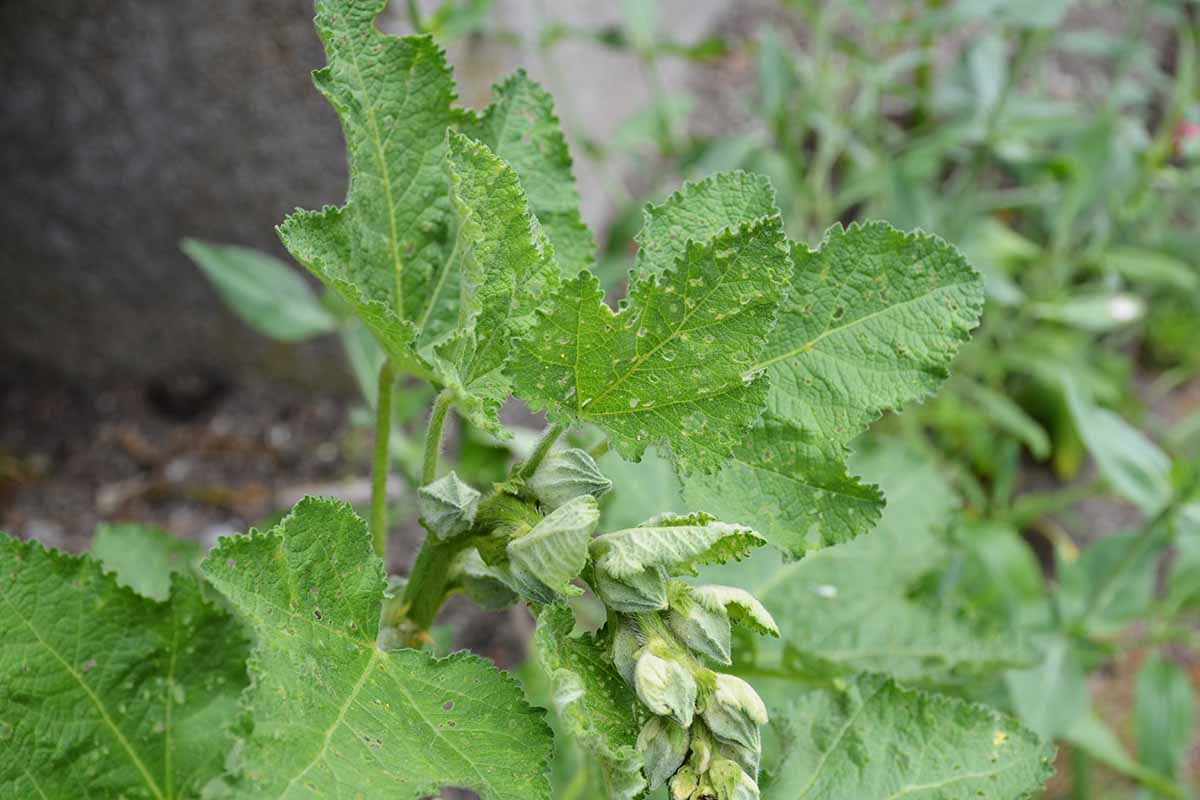
These pests haven’t developed a resistance to pesticides, and pretty much any product will kill them.
Neem oil, horticultural oil, insecticidal soap, spinosad, and pyrethrins are all effective.
I usually avoid using pesticides, even organic ones, unless I’m having a really bad year or I can’t get out often enough to remove the pests by hand, but I’ve found that pyrethrins work best for me.
You can grab Monterey Bug Buster-O at Arbico Organics in eight- or 16-ounce containers.
Monitor your plants in the spring for the first signs of feeding and start spraying.
It’s best to do all your spraying before the flowers form, both to protect pollinators and to get on top of an infestation before the weevils have a chance to lay their eggs.
You might need to repeat spray every few weeks or if you have a stubborn or particuarly large infestation.
Chemical Pesticide Control
I don’t recommend using chemical pesticides to control hollyhock weevils.
These pests don’t kill the plant and they can be controlled easily using methods described above that aren’t nearly as damaging to the surrounding environment and beneficial insects.
Plus, many pests can develop resistance to pesticides, so it’s wise to reserve the use of chemicals for when we really need them.
Make Your Hollyhocks Shine
I’m a fan of lace, but not when it comes to my hollyhock plants.
As easygoing as these flowers are, chances are that if you don’t keep on top of a weevil infestation, you’ll find your plants looking decidedly ragged.
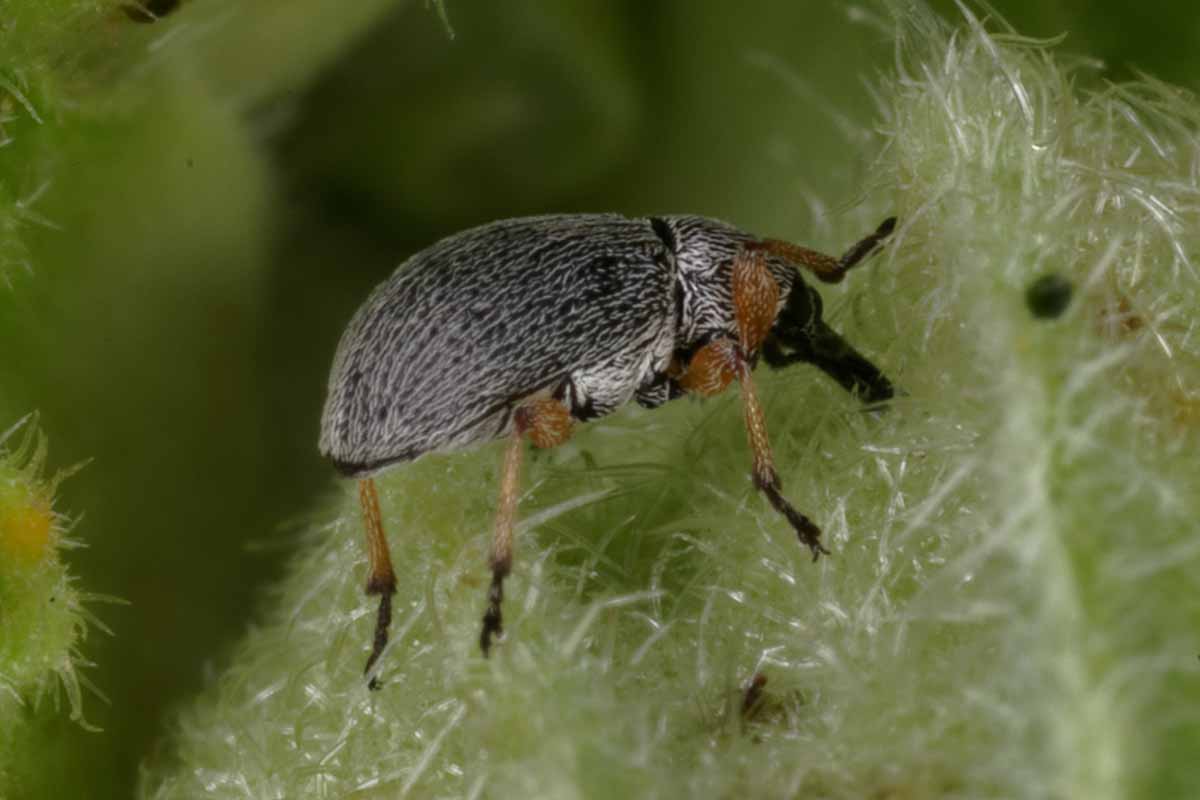
The good news is that the damage is mostly cosmetic and these pests are fairly easy to get rid of. Which method are you going to use to deal with your problem? Let us know in the comments section below!
And if you want to continue on your hollyhock-growing journey, check out these guides next:
